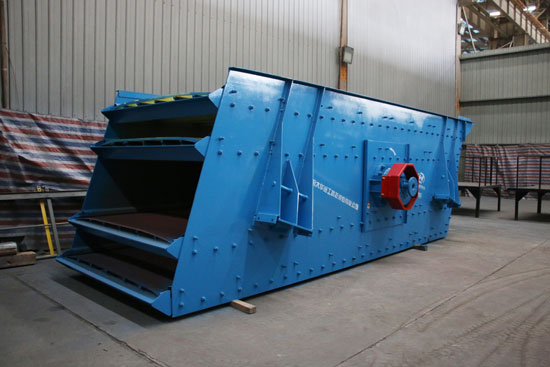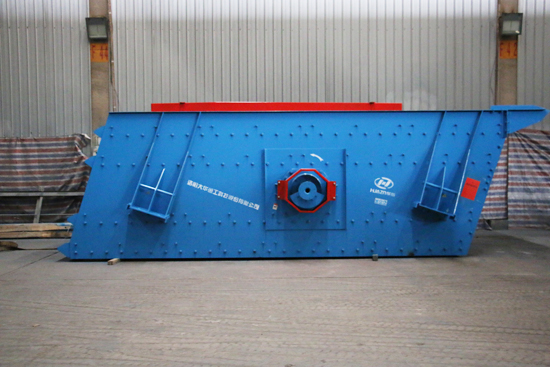Vibrating screen is a sorting, dewatering, desliming, and sorting screening device. The vibration of the screen body is used to loosen, layer, and screen the materials to achieve the purpose of material separation. It is widely used in mining, building materials, transportation, energy, chemical and other industries, and is used for grading, washing and dewatering of materials. Vibrating screens are mainly divided into linear vibrating screens, circular vibrating screens, and high-frequency vibrating screens. In the production of vibrating screen to maintain efficient and stable operation, daily inspection and maintenance are very important.

1.Feeding
The vibrating screen can be put into production only after it runs normally.
The material must be fed evenly to prevent uneven load on the motor.
2. Periodic inspection
Check the bearing temperature regularly. Under normal working conditions, the bearing temperature rise should be within 35 degrees, and the bearing temperature must not exceed 80 degrees.
Regularly check the degree of wear of the wearing parts such as screens, etc. If damaged, replace them in time.
Check the compression of the spring regularly.
Exciter bearings use large clearance bearings. Check radial bearing clearance before assembly.
Check the amount of grease in the bearing regularly. Too much grease can easily flow out of the gaps such as shaft holes and work hard, resulting in bearing heating; too little grease will increase the temperature rise of the bearing and reduce bearing life.
The shaker bearing is disassembled and cleaned every 6 months; the dirty grease is washed, and then refilled with new grease.
The bolts connecting the shaker to the screen box are high-strength bolts, and ordinary bolts are not allowed to be replaced. The tightening must be checked frequently, at least monthly.

3. How to perform regular maintenance?
The vibrating screen should be overhauled regularly. The overhaul should be carried out by full-time personnel. It is divided into the following types:
Weekly inspection: Check whether the shaker and the bolts of each part are loose, check whether the spring is damaged, check whether the screen surface is damaged or the screen hole is too large, and if necessary, treat it.
Monthly inspection: Check the screen frame structure itself or welds for cracks. If cracks are found in the beams or side plates, clean the surface and preheat repair welding. To avoid stress concentration, it is not allowed to make holes and weld accessories on the screen frame by yourself.
Annual inspection: major overhaul of the shaker should be disassembled and cleaned.

